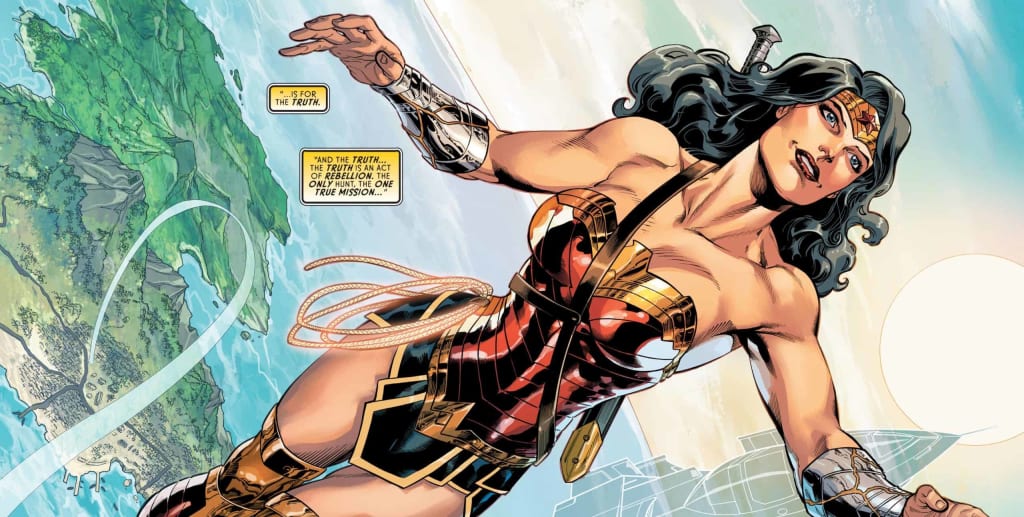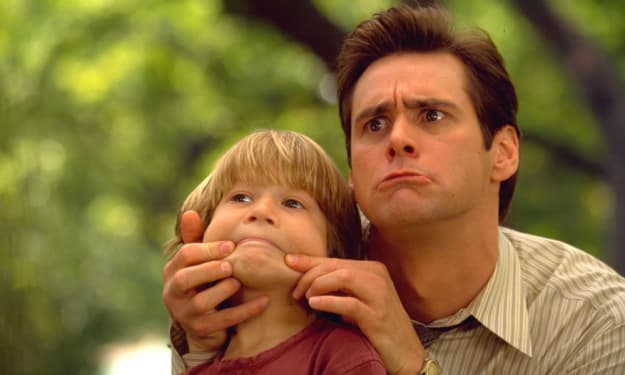Wonder Woman
Lady Comic Book History Podcast

Many publishers, writers and creators before the existence of Wonder Woman attempted to appeal to female readers by simply creating female characters without breaking them from the sexist, and misogynistic molds that too often held them. It wasn’t until the creation of Wonder Woman that a more complete view of women was depicted in the comic book universe. As always if you’d rather listen to the rant please check out the Lady Comic Book History Podcast.
The idea of a strong but loving female superhero was the brainchild of psychologist William Marston who in a 1940 interview in Family Circle Magazine suggested that comic books could have educational potential. Deeply influenced by the women in his life, he believed that women would one day rule the world. Marston wanted to shed light on the strengths of women, strengths that were often seen by society as weaknesses. When talking about Wonder Woman’s intention with Family Life Marston said
“Not even girls want to be girls so long as our feminine archetype lacks force, strength, power. Not wanting to be girls, they don't want to be tender, submissive, peace-loving as good women are. Women's strong qualities have become despised because of their weakness. The obvious remedy is to create a feminine character with all the strength of Superman plus all the allure of a good and beautiful woman.”
Taking these ideals Marston created the Amazonian warrior and she became the lead feature in Sensation Comics, All Star Comics and Comic Cavalcade in which she appeared on every cover and was the lead story in every issue. She made her first appearance in All Star Comics #8 in October of 1941, and got her first appearance in Sensation Comics #1 in January of 1942.
Wonder Woman’s is an origin that has been retconned over and over again, rather unnecessarily. In her original iteration Wonder Woman was sculpted from clay and given life and superhuman abilities from the Greek Gods. In one of her more recent retcons she became the daughter of Zeus, as an explanation for her increased power. Many of her original stories focused on breaking traditional suppressive tropes, like bondage. Instead of being caught tied up she was often shown breaking free from ties and bonds. The original Wonder Woman was also SUPER gay, one of her catch phrases was “suffering sappho” a heavy lesbian reference, along with imagery depicted the Amazons in relationships with each other, which is mythologically accurate, but after Marston’s death the progressive aspects of Wonder Woman’s character were discarded.
Marston’s death proved detrimental to the character, when he passed in 1947 she was left in the hands of Robert Kanigher whose 1st issue featured Wonder Woman in ballet slippers being carried by Steve Trevor, the exact opposite of the image Marston had when creating and launching the character.
Under Kanighers control Wonder Woman became the antithesis of everything she was meant to be. He made her a babysitter, model, movie star and housewife abandoning her superpowers to live a normal womanly life that was very reflective of the times and the real life boxes, real life women were forced into in the 50’s. The societal situation of thousands of women in America at the time sparked lots of art as a reflection, most notable being Stepford Wives, which was eerily similar to the image of Wonder Woman during the 50s. A once strong, independent woman who fights for both herself and others now reduced to a powerless housewife, though the intent was obviously sexist looking back it now supports a social commentary that draws its relevance from the real women who were pushed out of the workforce and back into the kitchen after the war. With these character changes also came physical ones, making Diana more womanly and less warrior-like, making her lips fuller, gaze softer, and boobs bigger. These drastic and damaging changes prompted one of the most historic femenist icons. Gloria Steinem to contact DC comics directly and ask “What happened to Wonder Woman”. You wanted to attract more female readers, you accomplished that, and then you destroyed what you built. What the original success of Wonder Woman, followed by its rapid decline when the reins were passed shows us is that the female comic book readers don’t want traditional and misogynistic gender roles shoved down our throats. We want super women, we want strong, outspoken characters, we want women that stand on their own. Because that's what’s real, real women are strong, real women are independent and outspoken, real women are badass. We want to see reflections of ourselves that just happen to have super powers That's what Wonder Woman is and was always supposed to be. The character was allowed to grow back into herself with the second wave of feminism, she was granted back her powers in Wonder Woman #204 in 1973.
The late 80s marked remarkable growth for Wonder Woman when George Perez took over writing for the powered princess, returning her to her roots and focusing on her mythological background, her ambassador-like qualities and ideals of peace, equality and love. Under his direction her character grew in popularity again, he expanded on her origin and allowed Diana to be everything she was meant to be.
After Perez’s departure the character once again fell into unfit hands, marking the harshest changes she’d ever have to go through. Ignoring her roots, her well established history, and her intention as a character writer William Messner-Loebs and artist Mike Deodato destroyed everything the character represented by making her more violent, aggressive and more scantily clad. Spitting on the grave of Marston and the idea of healing and fighting with love. And because she wasn’t undressed enough in her strapless, swimsuit like costume Deodato opted to put her in a black thong and bra, adding outrages curves then would ever be necessary to any character...ever. This is a prime example of writers not understanding a character and even better an example of male writers not understanding how to write a woman. They made classic male writing mistakes, they told male driven stories that just happened to have a female in the lead, the problem with this is that men and women experience the world differently, we do not have the same stories, we do not have the same experiences so you can not tell our stories in the same way and everytime a writer tries to do so they are devaluing not only the experiences of women but are reducing her to nothing more then a prop used to tell yet another male story. Sorry but I’m tired of straight, white, male stories 90% of ALL media is your stories, they’ve become the default as if other people don’t exist, that's over now. Everytime a dude complains about a movie or TV show because of and I quote “Sjw bullshit”, I just want to watch and promote it more, but I digress. The pair's butchering of the icon mercifully ended in the 90s and at the start of the 2000s Wonder Woman was allowed to once again return to her roots under the supervision of Phil Jimenez who took a much more authentic and respectful approach. As good as the writing of Jimenez and Perez were, the character didn’t have the opportunity to experience a truly female voice until 2006 when Gail Simone took over writing for the character completing 5 storylines; The Circle, Ends of the Earth, Rise of an Olympian, Warkiller and Contagion. It took 65 years for a feminist icon to be written by a female, if you don’t think thats absurd, youre wrong. Yes the creator of the character was a man, but he was a man that was deeply influenced and invested in the women in his life and genuinely believed in the strength and power of women and wanted to reflect that in a character so that new generations could feel that same love and strength that he felt in the women around him.
Wonder Woman became a feminist icon in more ways then one, she was used on the cover of Ms. magazine and her early stories were republished with an introduction from Gloria Steinem where she noted, “If we had all read more about Wonder Woman and less about Dick and Jane, the new wave of the feminist revolution might have happened less painfully and sooner.” She’s been used in feminist imagery for years and continues to be a strong icon for women of all ages to look up to and admire.
She is a character that has had many adaptations, ones that fell into her less strong comic iterations and others that truly showed her power and strength. Though the Lynda Carter television show was not the best adaptation of her character it did help pick up the popularity of the comic. The best visual interpretations of Wonder Woman were easily the Justice League animated series and in turn the Justice League Unlimited series, but her live action movie was truly one of the best adaptations of the character and extraordinarily meaningful for those of us who had been waiting our whole lives for that movie.
Even a female hero as geared towards feminism from the start has fallen prey to bouts of sexism and inescapable misogyny so I want to end with another quote from Marston from 1942,
“The only hope for civilization is the greater freedom, development, and equality of women”.
About the Creator
Alexandrea Callaghan
Certified nerd, super geek and very proud fangirl.






Comments
There are no comments for this story
Be the first to respond and start the conversation.